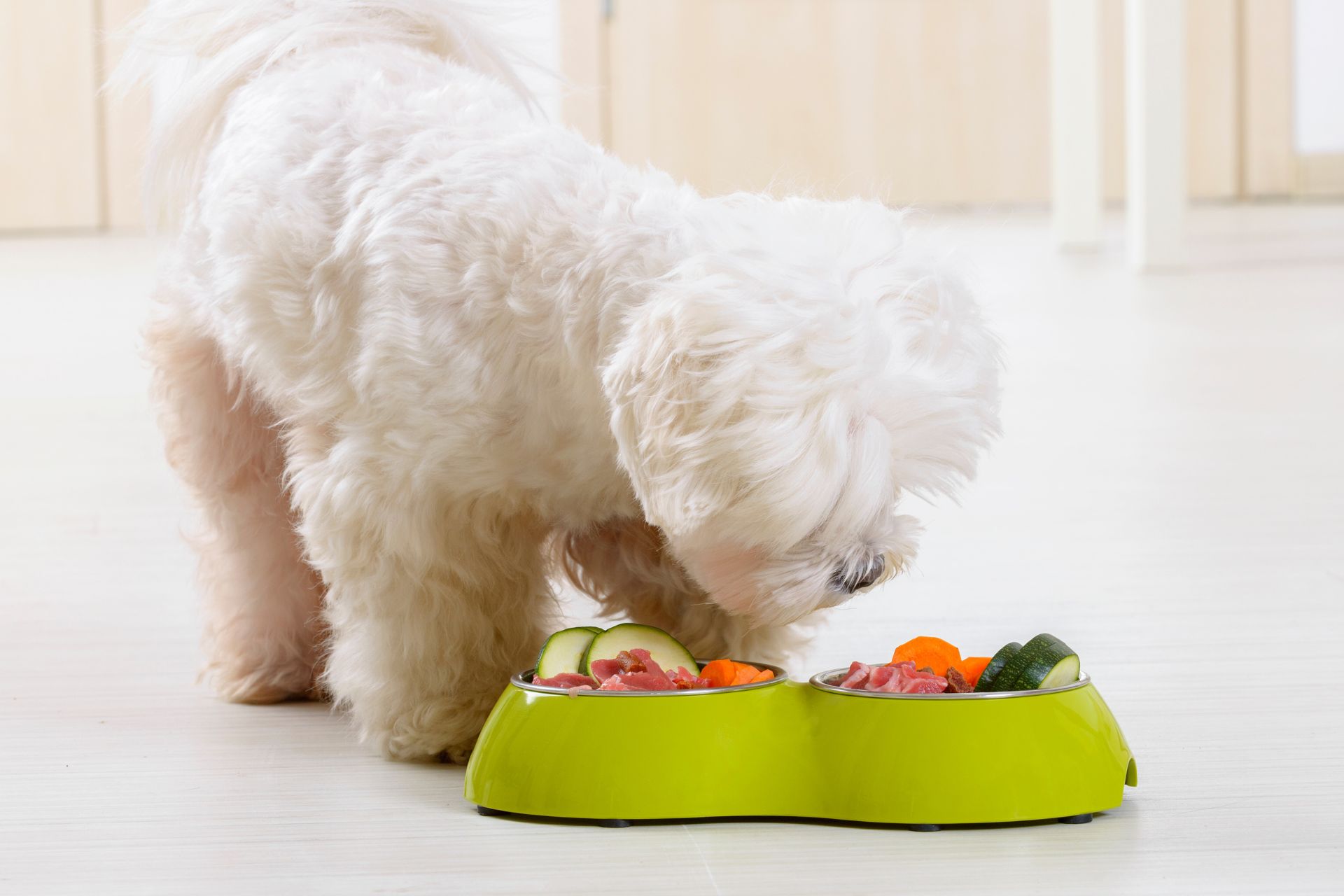When it comes to feeding our pets, we all want the best for them. And for many dog owners, homemade dog food seems like the ultimate way to give their furry friend a healthy, delicious, and tailored diet. But is homemade food really better than store-bought options? What do vets have to say about it? And most importantly, what ingredients should be in that perfect bowl of homemade dog food? Let’s break it all down—without the fluff.
Why Homemade Dog Food? Understanding the Benefits
Tailoring Nutrition to Your Dog’s Specific Needs
Just like how you wouldn’t eat the same thing every day (though your dog probably wouldn’t complain if it were steak), homemade dog food allows you to personalize your dog’s meals. Whether your pup is a young, hyperactive bundle of energy or a senior snoozer who prefers more chill vibes, you can adjust their diet to fit their age, size, and activity level.
For example, if your dog has food allergies, homemade meals let you avoid those pesky triggers while ensuring they get all the nutrients they need. No more guesswork, no more tummy troubles. 🍖
Avoiding Fillers and Artificial Additives
We all know that commercial dog food can be packed with fillers like corn and artificial preservatives. With homemade dog food, you’re in full control of what goes into your dog’s bowl. The result? Higher-quality meals without unnecessary junk. Because, honestly, why should your dog settle for anything less than what they deserve? Think of it as upgrading their meal plan from fast food to gourmet dining.
The Bond Between You and Your Dog
Obviously, your dog already runs the house. Why not strengthen that bond even more by taking control of their diet? Preparing your dog’s food at home not only ensures they’re eating the best, but it also shows them how much you care. Plus, nothing beats the feeling of seeing your dog excitedly wag their tail for the meal you made. It’s basically the dog version of “thanks, chef!”
What Ingredients Should Be in Homemade Dog Food?
The Essential Macronutrients for Dogs
Your dog’s diet needs three basic things: proteins, carbohydrates, and fats. Proteins are the foundation, giving them strong muscles and endless energy for zoomies. Lean meats like chicken, turkey, or beef are excellent choices.
Carbohydrates from grains like brown rice or quinoa provide sustained energy, while healthy fats from sources like fish or flaxseed oil give your dog a shiny coat and keep their brain sharp (well, as sharp as a dog can be when they’re chasing their own tail). 🐾
Top 3 Ingredients for a Balanced Diet
If you’re wondering what the top three ingredients should be, here’s your answer:
- Lean Meat (chicken, turkey, or beef): Essential for protein and muscle development.
- Leafy Greens (spinach, kale): Packed with vitamins and minerals that boost your dog’s immune system.
- Whole Grains (brown rice, quinoa): Provide energy and fiber for digestion.
Foods to Avoid in Homemade Dog Food
While there are plenty of great ingredients you can use, there are some serious no-no’s too. Don’t even think about adding onions, garlic, chocolate, or bones to the mix. These (and other fruits and veggies) can be toxic to dogs. Even though your pup may beg for that chocolate chip cookie, resist the urge—it’s not worth the risk. Trust us, it’s much easier to make them a dog-friendly snack instead.
What Do Vets Say About Homemade Dog Food?
The Importance of Consulting Your Vet
Okay, here’s the deal: before you start channeling your inner Gordon Ramsay and whipping up gourmet meals for your dog, talk to your vet. Vets know your dog’s specific health needs and can guide you on how to craft a balanced, nutritious homemade diet. This is especially important for dogs with underlying health conditions, like kidney disease or diabetes. The last thing you want is to accidentally throw off their nutritional balance. 🍗
Are Supplements Necessary for Homemade Dog Diets?
Even if you’re using top-notch ingredients, your dog may still need supplements to fill in the nutritional gaps. Calcium, omega-3s, and vitamins like D and B12 are common recommendations. Ask your vet if your homemade meals should be paired with supplements to keep your pup in peak condition. You wouldn’t skip out on your own vitamins, right?
Raw vs. Cooked Homemade Diets: What Vets Prefer
Raw food diets have become a buzzword in the pet community, but is it really a good idea? While raw food advocates claim it mimics what dogs would eat in the wild, many vets caution against it. Raw meat can carry harmful bacteria like salmonella, which could make your dog (and you!) sick. Cooking your dog’s meals not only eliminates that risk but also ensures they’re easier to digest. Think of it like a home-cooked Sunday dinner—without the salmonella side effects.
Your inbox needs this
Subscribe to the Petme newsletter for weekly updates with pet care tips, tales, and member-only perks.

How to Make Homemade Dog Food: Step-by-Step Guide
Choosing the Right Ingredients
When preparing homemade dog food, aim for a 40% protein, 50% veggie, and 10% grain ratio. Start with lean meats like chicken or fish. For vegetables, opt for leafy greens and starchy vegetables like sweet potatoes, carrots, or pumpkin. And don’t forget to add whole grains to ensure your dog gets enough fiber.
Cooking Methods to Retain Nutrients
The trick to retaining all those precious nutrients is gentle cooking. Steam or boil the veggies, and cook meats without seasoning (your dog will thank you for not adding that extra salt). You want to make sure everything is easy to digest, so chop it up into small, bite-sized pieces.
Portion Sizes and Meal Storage
Once you’ve cooked your dog’s meal, let it cool and divide it into portions. Store meals in the fridge for up to five days or freeze them for longer-term storage. Pro tip: Always label the containers with dates so you know when it’s time to toss them out. Because, your dog might not be picky about their food, but you should be.
Common Questions About Homemade Dog Food
How Much Homemade Food Should I Feed My Dog?
The general rule is about 2-3% of your dog’s body weight. If your dog weighs 50 pounds, you’d feed them roughly one pound of food a day, split into two meals. Keep an eye on their weight and adjust portions if necessary.
Can I Use Table Scraps in Homemade Dog Food?
While it’s tempting to toss some of your leftovers into your dog’s bowl, it’s better to avoid table scraps. Many human foods contain spices, onions, or garlic that can be harmful to dogs.
Is Homemade Dog Food Cheaper?
Homemade food can be pricier upfront depending on the ingredients. However, you can save money by buying in bulk and cooking in large batches. Plus, the health benefits might save you on vet bills down the line. Cha-ching!
Can I Freeze Homemade Dog Food?
Absolutely! Just make sure it’s properly stored in airtight containers and labeled with the date. Homemade dog food can last up to three months in the freezer.
How Do I Know If My Dog Likes Homemade Food?
It’s all in the wag! If your dog devours their meal and comes back looking for more, it’s safe to say you’ve got a hit on your hands. If they’re a bit hesitant, try adjusting the ingredients until you find their favorites.
The Best Homemade Dog Food Recipes to Try
Chicken and Rice Recipe
This classic recipe is perfect for dogs with sensitive stomachs. Cook lean chicken breast with brown rice and mix in some cooked carrots and peas.
Beef and Sweet Potato Recipe
For a heartier meal, try lean ground beef with sweet potatoes and spinach. Add a dash of flaxseed oil for those healthy omega-3s.
Fish and Oatmeal Recipe
Packed with protein and fiber, this dish combines cooked salmon with oatmeal, steamed green beans, and a bit of pumpkin.
Find the full recipes and other cooking tips here.
Final Thoughts: Is Homemade Dog Food Right for Your Dog?
Homemade dog food can be a game-changer for your pet’s health and well-being. With the ability to customize meals, avoid fillers, and strengthen your bond with your dog, it’s no wonder more people are making the switch. Just remember, Petme can be a helpful resource for connecting with other pet lovers who are also exploring homemade diets for their pets. Before you dive in, consult your vet to ensure your dog’s nutritional needs are met, and let the tail-wagging begin!
FAQ
1. How do I know if my dog’s homemade food is balanced?
Consult a vet or pet nutritionist to ensure your recipe covers all the necessary nutrients.
2. Can homemade dog food cause allergies?
Homemade food can actually help you control allergens, but always monitor your dog for any reactions.
3. Do dogs prefer homemade food over store-bought?
Many dogs love the taste of fresh, homemade meals, but it depends on individual preferences.
4. How can I transition my dog from kibble to homemade food?
Slowly introduce homemade food by mixing it with kibble, gradually increasing the homemade portion.
5. Can I use homemade food as a topper for kibble?
Yes! Adding a bit of homemade food to kibble can enhance flavor and nutrition.
Now you’re all set to become your dog’s personal chef! 😎🍴












Join the discussion 2 Comments